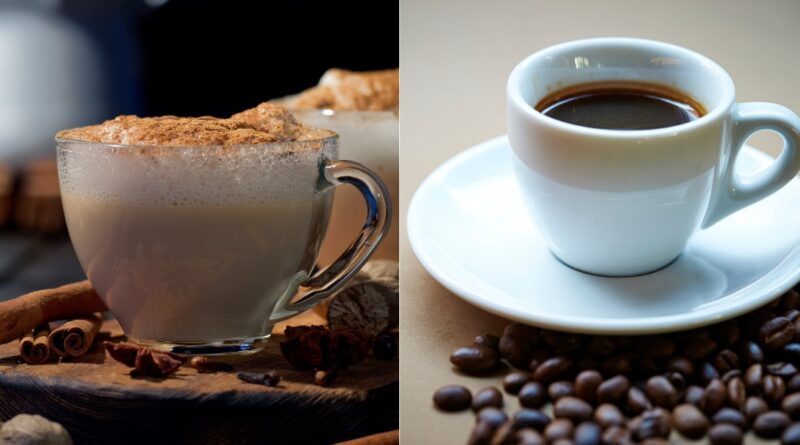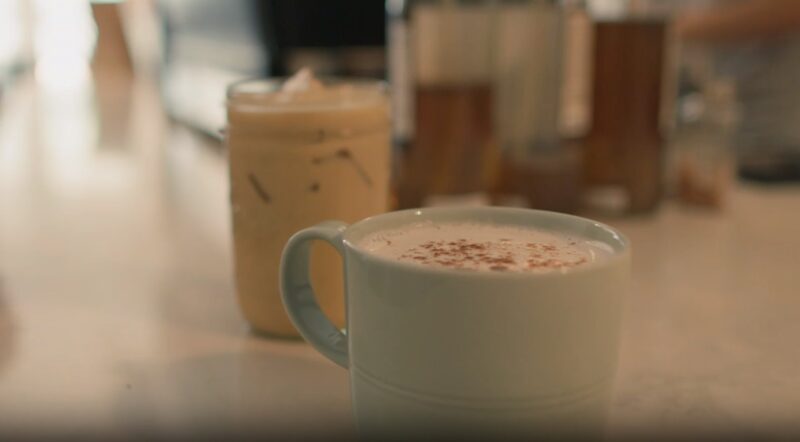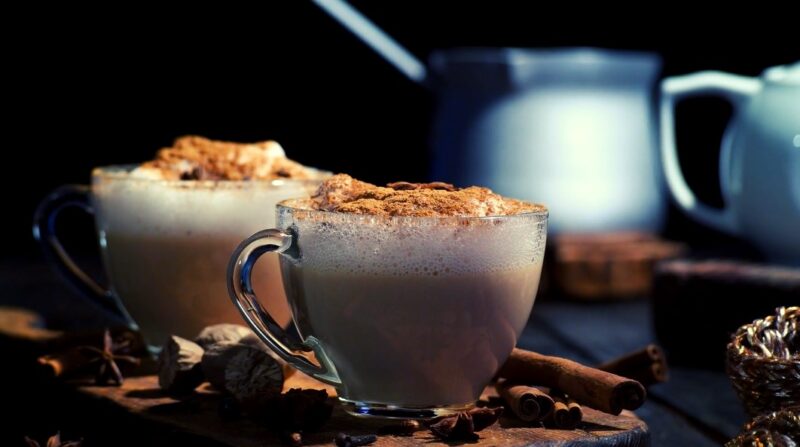Stemming from “chai,” the Hindi term for tea, and “latte,” the Italian word for milk, the chai latte is a harmonious concoction of black tea infused with spices such as cinnamon, cardamom, cloves, ginger, and black pepper, crowned with steamed milk and a touch of foam.
This beverage is a Western spin on the traditional Indian “masala chai,” a cornerstone in South Asian cultures for generations.
A chai latte typically contains between 40 to 120 milligrams of caffeine per serving. The exact amount can vary depending on the type of black tea used and the brewing time.
The Core of Caffeine
Indeed, chai lattes contain caffeine. The primary caffeine source in a chai latte is the black tea. Compared to other tea varieties like green or herbal teas, black tea leaves are recognized for their elevated caffeine content.
The precise caffeine quantity in a chai latte can fluctuate based on factors like the black tea variety, brewing duration, and the balance of tea with milk and spices.
Influences on Caffeine Content
The caffeine levels in chai lattes can show significant variation from one serving to the next. This variability is shaped by:
- Type of Tea: The specific black tea used can impact caffeine concentration, with Assam tea generally containing more caffeine than Darjeeling.
- Steeping Duration: A longer steep allows for more caffeine extraction.
- Milk Dilution: Adding milk dilutes the caffeine’s potency, although it doesn’t reduce the actual caffeine content.
Caffeine Comparisons

Comparing chai lattes to other popular drinks reveals that they typically have less caffeine than regular coffee but more than most herbal teas.
An average coffee cup might have 95 to 200 milligrams of caffeine, while chai lattes usually range from 40 to 120 milligrams, depending on how they’re prepared.
Health Implications
With caffeine present in chai lattes, it’s crucial to consider the potential health impacts. Caffeine’s stimulant effects can enhance alertness and ward off fatigue.
Individual reactions to caffeine can vary, with some experiencing anxiety, jitteriness, heart palpitations, or sleep disturbances from excessive consumption.
A Cultural Odyssey
Beyond caffeine, chai lattes carry a profound cultural heritage. The spices in traditional chai recipes are cherished not only for their flavors but for their medicinal properties.
Ingredients like ginger and cloves offer anti-inflammatory benefits, while cardamom and cinnamon can aid digestion.
Thus, the chai latte transcends being a mere beverage; it’s a drink steeped in wellness traditions, revered across cultures.
Customizing Your Chai Latte

For those mindful of their caffeine intake or wishing to customize their chai latte experience, options abound. Using decaffeinated black tea can create a version with less caffeine.
Adjusting the milk-to-tea ratio can cater to personal taste and caffeine sensitivity. The chai latte’s appeal lies in its flexibility, welcoming adaptations to suit individual preferences.
FAQs
Can I make a chai latte without black tea?
Yes, you can create a chai latte without black tea by using herbal tea alternatives like rooibos, which offers a similar depth of flavor without the caffeine. This allows you to enjoy the spice blend and creamy texture while avoiding caffeine.
Is there a way to sweeten my chai latte without using sugar?
Uh-huh! You can sweeten your chai latte with natural sweeteners like honey, agave nectar, or maple syrup. These alternatives provide a rich sweetness that complements the spices beautifully without relying on refined sugar.
Can chai lattes be made vegan?
Yes, chai lattes can easily be made vegan by substituting dairy milk with plant-based alternatives such as almond milk, oat milk, or coconut milk. These options offer a delightful creaminess and can even add an extra layer of flavor to your chai latte.
How can I enhance the spice flavor in my chai latte?
To intensify the spice flavor, consider using whole spices and gently crushing them before brewing. This releases their essential oils and aroma, resulting in a more robust and vibrant spice profile. Additionally, simmering the spices with your tea for a longer period can deepen the flavor.
Is it possible to make a chai latte cold?
Yup! For a refreshing twist, you can prepare a cold chai latte by brewing the tea and spices as usual, then cooling it down in the refrigerator. Mix with cold milk or a milk alternative and serve over ice. This cold version offers a revitalizing alternative to the traditional hot chai latte.
Can chai lattes contribute to hydration?
While chai lattes do contain liquid from the water and milk, which can contribute to hydration, the caffeine in black tea can have diuretic effects. It’s important to balance your intake of chai lattes with water and other hydrating beverages throughout the day to maintain optimal hydration levels.
Final Words
The chai latte, with its creamy consistency, rich spices, and gentle caffeine presence, offers a singular beverage experience appealing to a diverse audience. While caffeine is a component of its charm, the drink’s true essence lies in its history and the ability to connect with various cultural traditions.
Whether looking for an energizing start, a midday comfort, or a soothing evening treat, the chai latte stands ready to envelop you in its warm, aromatic embrace. Delving into the chai latte’s story not only answers our initial inquiry but deepens our appreciation for its cultural significance and personal resonance.
So, as you indulge in your next chai latte, pause to appreciate the journey that has brought this enchanting drink to your cup.
